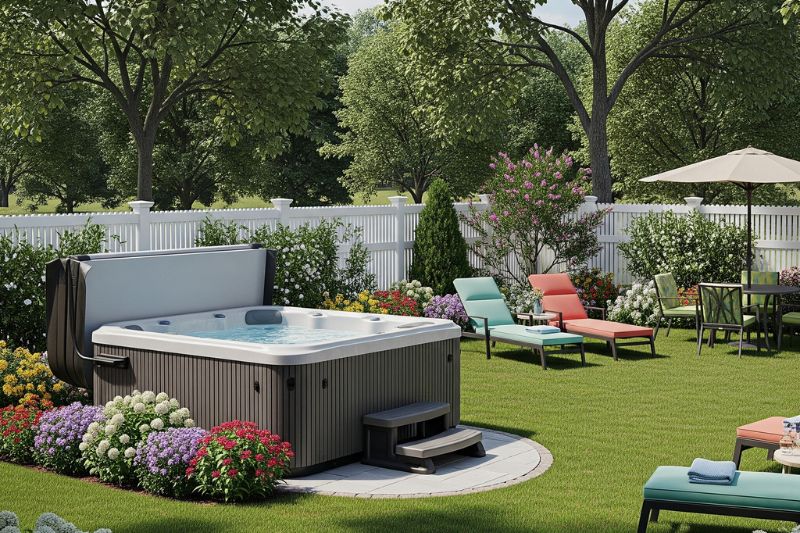
What Is a Non-Chlorine Shock, and When Should I Use It?
Share
Non-chlorine shock (potassium monopersulfate) oxidizes contaminants without raising chlorine levels. Use it for routine maintenance or when you don’t want to raise sanitizer levels, such as before using the hot tub.
When should I use a non-chlorine shock?
Use it weekly or after heavy use to clear organic waste and refresh water. It’s ideal when you want to soak sooner without waiting for chlorine levels to drop.
What Does Non-Chlorine Shock Do?
Oxidizes Organic Contaminants
Non-chlorine shock, typically made of potassium monopersulfate, breaks down organic material like sweat, oils, and lotions. These contaminants deplete sanitizer and make water cloudy or smelly.
Benefits:
-
Removes organic waste
-
Reduces odors
-
Helps maintain sanitizer effectiveness
Supports Sanitizer Performance
By removing waste that sanitizer would normally attack, non-chlorine shock allows chlorine or bromine to focus on killing bacteria and viruses.
What you’ll notice:
-
Water stays clearer longer
-
Less sanitizer is needed over time
Does Not Kill Bacteria
It’s important to note that non-chlorine shock is not a sanitizer. It won’t kill bacteria on its own, so you still need chlorine or bromine in your water.
Key point:
-
Use alongside a proper sanitizer
-
Not a replacement for regular disinfection
When to Use Non-Chlorine Shock
Weekly Maintenance
Adding non-chlorine shock once a week keeps water fresh and minimizes the buildup of organic contaminants.
Steps:
-
Test water first
-
Add recommended amount based on spa size
-
Run jets for at least 30 minutes
After Heavy Use
Whenever your hot tub sees a lot of guests or long soaking sessions, organic debris builds up quickly.
Signs you should shock after use:
-
Water looks dull or cloudy
-
Strong odor develops
-
Sanitizer level drops sharply
Between Chlorine Treatments
If you want to soak soon after treatment, non-chlorine shock is a better option since it doesn’t raise chlorine levels that require waiting.
-
Great for midweek maintenance
-
Lets you enjoy the hot tub sooner
When Water Smells Bad
Foul odors often come from chloramines, which are spent chlorine molecules combined with contaminants.
-
Non-chlorine shock breaks down chloramines
-
Restores a clean, fresh smell
How to Use Non-Chlorine Shock Properly
Test Water First
Before adding, check pH, alkalinity, and sanitizer levels to ensure everything is within range.
Ideal ranges:
-
pH: 7.4 to 7.6
-
Alkalinity: 80 to 120 ppm
Add Shock With Jets Running
Turn on your jets to circulate the water and help distribute the shock evenly.
-
Leave cover off for at least 30 minutes
-
Avoid entering the water right after shocking
Follow Manufacturer’s Instructions
Use the amount specified on the package based on your hot tub’s size.
-
Overdosing can throw off balance
-
Under-dosing won’t be effective
Benefits of Non-Chlorine Shock
Quick Water Recovery
Because it doesn’t raise chlorine levels, you can typically soak again within 15–30 minutes.
Less Harsh on Skin and Eyes
Non-chlorine shock doesn’t produce the strong odors or irritation that high chlorine doses sometimes cause.
Reduces Wear on Equipment
With less chemical buildup, your hot tub’s components are exposed to fewer harsh conditions, helping them last longer.
When to Avoid Non-Chlorine Shock
No Sanitizer Present
If your water is completely unsanitized, non-chlorine shock alone won’t make it safe.
-
Always maintain proper sanitizer levels
-
Use chlorine or bromine if bacteria is a concern
Cloudy Water From Metals or High Calcium
Non-chlorine shock won’t fix water issues caused by metals or scaling.
-
Test for metals and treat with a sequestrant if needed
-
Adjust calcium hardness if scaling is present
Long-Term Maintenance Tips
Alternate With Chlorine Shock
Using chlorine shock monthly and non-chlorine shock weekly can keep water balanced and bacteria-free.
Maintain Filter and Water Balance
-
Clean filters monthly
-
Test water at least twice a week
-
Keep pH and alkalinity in range
Cover Your Hot Tub
Minimize debris and evaporation by keeping the cover on when not in use.
When to Call a Professional
If your water remains cloudy, smelly, or unsafe despite regular shocking, it might indicate a deeper problem.
Call a Technician If:
-
Persistent biofilm or slime appears
-
Water never clears despite maintenance
-
Equipment malfunctions
A professional can inspect your system, test water thoroughly, and recommend advanced solutions.
Enjoy a Fresher, Cleaner Soak
Non-chlorine shock is a powerful tool for maintaining clear and inviting hot tub water. By understanding when and how to use it, you can extend your water’s freshness, reduce sanitizer demand, and enjoy more comfortable soaks.
